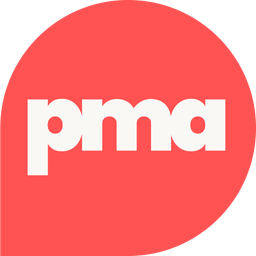Every product marketer who launches products for industries with niche audiences knows that creating content for these audiences requires more than a one-size-fits-all approach. This unique challenge does not belong to a specific region, language, or generation. It is very much global, and it is here to stay.
Let’s look at the challenge closely: how do you create content that resonates with a group of professionals so specific that even the wrong tone of voice can cost you their already limited attention span?
Over the past four years of my career, I have had the chance to create content for a group of niche professionals that taught me more than I could expect.
In my case, that niche is auditors – pragmatic, risk-averse, quiet, meticulous professionals working behind the scenes to ensure everything lines up down to the decimal point. They are one of the key reasons why our world can operate in trust.
For context, when I first stepped into this space, I knew absolutely nothing about their world. I had no audit or finance background. I did not even know anyone personally who worked in the field. It was a completely unknown world to me. At the beginning, I was confused, worried, and honestly, a bit lost.
Fast forward to today, we now create content that our audience actively shares and engages with.
How? Here are the three strategies that helped our team not only reach but also genuinely connect with our niche audience.
1. Understand who they really are. Not just their title and responsibilities.
It is tempting to categorize niche audiences based solely on their job titles and responsibilities. But if you stop just there, you miss the person behind the profession.
Most of these audiences are looking for human, emotional interaction with companies. They want to be understood not just on a professional level but also on a personal level.
Take auditors. On the surface, they are known for being meticulous, composed, and risk-averse.
But after speaking with many of them and checking some of their biggest online communities, I learned something unexpected, perhaps the opposite of what you would assume: these people have a killer sense of humor. Dry, sarcastic, and incredibly self-aware.
While they might project professionalism at work, outside of their Excel sheets and compliance checklists, they are the first to laugh at their own profession.
That insight became a turning point in how we approached content. Instead of treating them like stone-faced number crunchers, we started seeing them as people who crave both excellence and playfulness. That understanding shaped every piece of content that followed.
Get practical
Go beyond demographics. Talk to your audience. Try to understand who they are outside of their day-to-day tasks. Join their online communities on Reddit.
Most importantly, pay attention to what they joke about. In many niche audiences, what they joke about is what they care about. If you can understand that, you will understand them.

2. Connect the pain to what makes them laugh.
Once you understand who your audience really is, you are in a much stronger position to speak to what they go through.
Their personality is not separate from their professional challenges (no innie and outie situation here). It shapes how they experience those challenges, how they talk about them, and how they want others to relate to them.
For auditors, one of the biggest pain points is the overwhelming amount of manual and repetitive tasks. Manual matching and reconciliation, ticking and tying financial statements using a calculator, and copy and pasting from PDFs to Excel sheets all day long. It is not the most fun aspect of the job, and most of them will admit it.
But here is something that became very clear to me over time: because their work is so high-risk and important, especially when dealing with clients or regulators, they crave content that is not.
The pressure to stay sharp and be precise never really goes away. So when they are scrolling LinkedIn or conversing through online communities, they are often looking for a moment to blow off steam. A break from the intensity.
That’s where memes came in.
We started turning their pain into fun and relatable memes and the result? The engagement on our company posts literally exploded. They were liked, reposted, and commented. Our audience was even tagging their colleagues. The fact that they relate to our posts too much made us a credible, trustworthy, and human.
Was it risky to use memes for such a serious audience? You might think so. But it worked, because we met them where they actually were, not where traditional corporate marketing assumed they would be.
Get practical
What annoys your audience the most? What is a clever, cheeky, and funny way to acknowledge that pain without pressing it too hard?
Humor has a way of revealing someone’s real frustrations, personality, and what they truly care about. Humor is a great tool for truth-telling since it’s unserious, indirect, and playful. When used well, humor can turn pain points into connection points. And in niche audiences, humor is often the fastest way to build trust.
3. Learn their jargon and speak it fluently.
The key to making these memes and the jokes successful ultimately comes down to two things: using the right meme and the right jargon. Yes, the jargon.
Here is why: humor alone does not make you earn the thought leader recognition or long-term credibility. If you want niche audiences to trust you and your content, you need to speak their language fluently.
And niche audiences come with niche jargon.
In my case, I had no background in audit or finance. I did not know what a day, let alone a year, looked like in the audit world. I did not understand why I was not supposed to casually mention “Busy Season”. I had no clue what “test of detail” or “tick and tie” meant. It genuinely felt like learning a new language.
But I committed to understanding their world. I spoke to auditors a lot of times. Like, a lot. I learned all audit procedures, the terminology, and the busy season schedule. I even mapped out the audit cycle so I could adjust content distribution with relevant timelines. Our messaging was completely founded on their jargon and terminology.

Get practical
Be fluent in their language. Talk to people in the profession. Ask them to explain things to you as if you were a seven-year-old. Then ask them to repeat it ten times.
Read the news, the industry whitepapers, and listen to relevant podcasts. Create a glossary in Notion of the terminology, acronyms, and processes you hear often, and explain them in your own words.
Once you have drafted your content, share it with someone in your niche audience. Ask for feedback. Talk over it, gather their thoughts, listen to their reactions, and observe what resonates.
Result
We now have the largest growing community of auditors actively engaging with our content, events, and each other. What started as a few memes, product videos, and blogs turned into an engaging community. This growth is not just a metric. It is a clear sign that our audience feels seen, supported, and celebrated.
Some significant results were:
- A significant rise in organic content shares, comments, and mentions across LinkedIn
- Organic collaboration opportunities, like webinars or interviews with industry leaders, because of our growing thought-leader position and brand reputation
- Strong participation in our annual award show, thought leader reports, and flagship event
This was not a result of a six-month strategic plan with a big investment. It was the result of understanding the person behind the profession, relating to their daily pains, and showing up with content that felt human to them.
The takeaway
Niche audiences can be critical. They can smell insincere content from a mile away. But when you take the time to understand who they are, reflect their humor, and speak their language, your content will naturally start to stick.
Creating content for a niche audience taught me that even the most technical, detail-oriented professionals crave connection and personality. And once you learn how to blend that with real value, the engagement takes care of itself.
For all product marketers who are dealing with a niche audience: use your content to build a real human connection. Trust me, your audience will definitely remember you for it.









